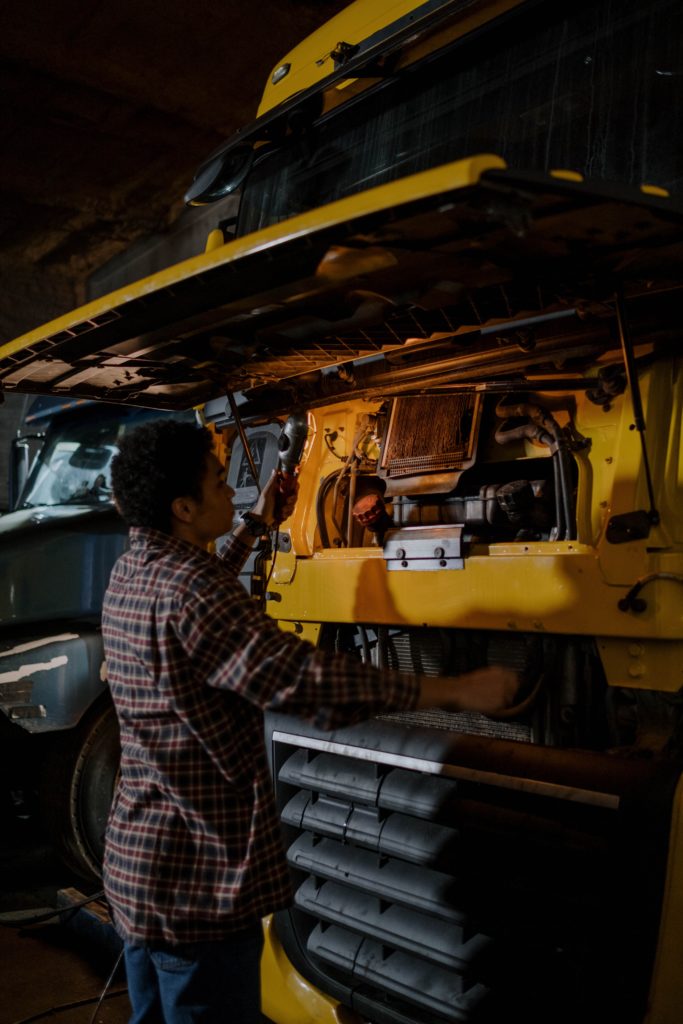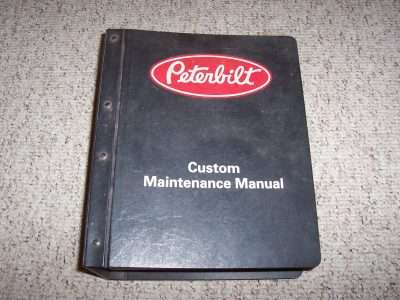2001 PETERBILT 379
Class 8 trucks manufactured by PACCAR’s Peterbilt subsidiary from 1987 to 2007 are the Peterbilt 379. The 379 was Peterbilt’s flagship model and the successor of the 359, a conventional-cab truck designed especially for highway usage. The 2001 Peterbilt 379 was a popular choice for owner-operators for most of its manufacture. The 379, like the W900, is a common starting point for truck customization. Following its retirement in 2007, the Peterbilt 379 was succeeded by the 389, which had a larger bonnet and oval headlight clusters. The last 1000 instances of the 379 were designated as Legacy Class 379 to mark the conclusion of manufacturing.
The 2001 Peterbilt 379 was it’s biggest highway truck at its inception, with a 119-inch BBC (bumper to back of cab length) and a 127-inch BBC. On the outside, the 379 differs from the 359 due to its larger windscreen (which allows for horizontally positioned wipers) and the addition of turn signals mounted on the headlights (which were formerly on the fender), as well as the standardization of rectangular headlamps. Since 1986, Peterbilt’s conventional trucks have shared the 379’s cab structure and its doors, except the 587 and 579 models.
Performance and Fuel Economy
The 2001 Peterbilt 379 is powered by a Caterpillar C-15 engine that generates 475 horsepower. Semi-trucks require the power of the Caterpillar C-15 diesel engine, which has been constructed with the most advanced technology for long-distance highway travel in mind. This six-cylinder diesel engine’s compression ratio is 18:1 with a four-stroke cycle. This engine uses 10 gallons of oil and weighs around 2,890 lbs. Real-time clock, electronic self-diagnostics, battery backup, cold weather starter, and reprogrammable operating settings that customers may modify are just some of the advantages this Caterpillar engine has to offer.

2001 PETERBILT 379 Service Manual
These repair manuals go through every aspect of how the vehicle operates. The vehicle’s service manual for 2001 PETERBILT 379 must accompany a mechanic for every repair. Subjects found inside this manual include:
- Introduction
- Safety Restraints
- Instrumentation
- Before Driving
- Starting and Operating
- Vehicle Maintenance
- Specifications
- Capacities
- Servicing
- Customer Assistance
- Index
The Peterbilt service manual for the 379 is vast and covers every aspect of the vehicle’s service and operation.
Design
An automobile classic, the 379 has unquestionably earned its worldwide renown. The Peterbilt 359 was replaced in the late 1980s, and it remained Peterbilt’s most popular model for the next 20 years. Despite their age, these long-nose Peterbilts continue to draw attention on highways across the globe. Even after its discontinuation in 2007, the Peterbilt 379 remains a highly sought-after secondhand truck type.

379X
Even if they don’t stay long, we’re delighted to report that many of these 379s end up in our lot. 379X, Peterbilt Motors’ highest trim level, was established to further outdo themselves in this exceptional show of pride and elegance. As well as 7″ exhaust stacks, the 379X version has extra polished aluminum features throughout the vehicle, including distinctive fenders and a striking center-line hood.
Interior Comfort
Designed for both comfort and productivity, the Peterbilt 379 is a vehicle worth considering. With an extra-large cab and a curved dash, all of the controls are easily accessible. The riding cab sleeper arrangement on the Peterbilt 379 is large and quiet, ensuring maximum road comfort. An adventure in a vintage Peterbilt would not be complete without a means of communication that dates back many decades. Many Peterbilt 379 trucks are equipped with either the Cobra 25 or the Cobra 29 LTD Classic.
The Unibilt sleeping cabin on the Peterbilt 379 provides 63 inches of standing room. This vehicle has a 250-inch wheelbase and a steel frame. Strength and stability are provided by this heavy duty truck steel chassis and broad wheelbase. Aluminum wheels are used to attach the 22.5 LP tires. Interior options range from cloth to leather to power steering to air conditioning in the cab of the Peterbilt. It also has an enlarged front end. In order to keep all of your controls within easy reach, the dashboard of the cab was designed to curve toward the driver.

